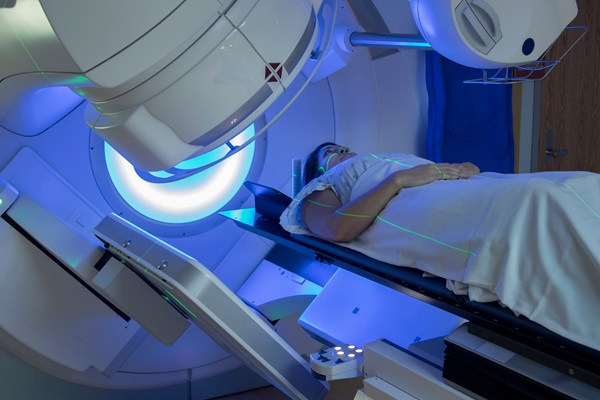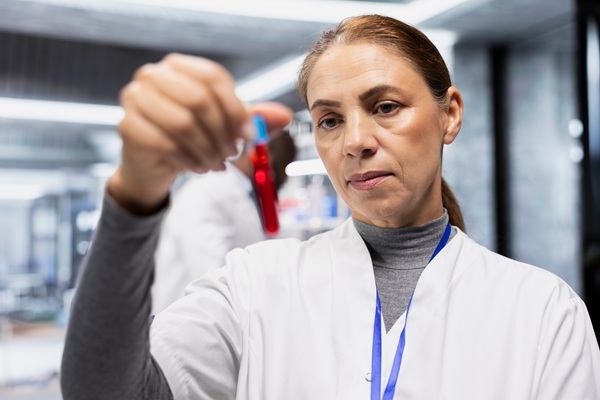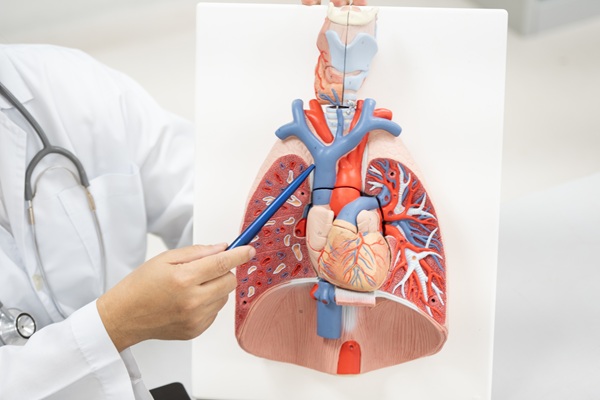How Is Chemotherapy Used for Lung Cancer Treatment?

Chemotherapy, commonly known as "chemo," is a lung cancer treatment that uses anti-cancer drugs to kill cancer cells in the lungs and other parts of the body. It can shrink or stabilize the tumor, target leftover cancer cells after surgery, or alleviate symptoms. A chemotherapy plan is personalized to each patient's unique needs and circumstances, such as the type and stage of the lung cancer, overall health, and treatment goals and preferences.
How chemotherapy works
Chemotherapy drugs disrupt the rapid growth and division of cancer cells, targeting the primary tumor and cancer cells that may have metastasized in other parts of the body. Unlike surgery or radiation therapy, which targets specific areas, chemotherapy is systemic, circulating in the patient's bloodstream to reach and kill cancer cells wherever they may be.
Chemotherapy for lung cancer treatment may be administered in various forms, including intravenously, orally, or through targeted delivery methods. The specific drugs and regimen prescribed depend on factors such as the type and stage of lung cancer, the patient's overall health, and other therapies used in their treatment plan.
When oncologists use chemotherapy
Small-cell lung cancer (SCLC)
As mentioned previously, chemotherapy travels through the bloodstream and reaches most of the body. It is typically part of the lung cancer treatment plan for small cell lung cancer (SCLC). By the time that SCLC is detected, it has already spread to other areas of the body. As a result, treatments like surgery or radiation alone would not be able to reach all the areas where the cancer has spread.
Patients with limited-stage SCLC are often given chemotherapy with radiation therapy. This combination therapy is known as chemoradiation. However, for those with extensive-stage SCLC, chemotherapy with or without immunotherapy is usually the main treatment. In some cases, the oncologist may also recommend radiation therapy. Patients in poor health or who are in the later years of their life may not be able to tolerate intense doses of chemotherapy or a combination of drugs, but this is not a reason to avoid chemotherapy in their lung cancer treatment plan.
Non-small-cell lung cancer (NSCLC)
Up to 90% of those with lung cancer have non-small-cell lung cancer (NSCLC). Patients with NSCLC may have chemotherapy before or after surgery or after radiation therapy. Chemotherapy helps kill cancer cells that have spread to other parts of the body.
For those with NSCLC, chemotherapy after surgery can help prevent their cancer from returning, particularly if they have stage II or stage III lung cancer. If the patient has stage III lung cancer that their oncologist cannot treat with surgery, they may benefit from chemoradiation. For patients with stage IV NSCLC, chemotherapy is typically the main treatment method, though radiation therapy may also help ease symptoms.
Types of chemotherapy drugs
Several classes of chemotherapy drugs are used in lung cancer treatment, each with its unique mechanisms and potential side effects. SCLC is often first treated with combinations of chemotherapy drugs, such as cisplatin and etoposide or carboplatin and etoposide. Other classes of chemotherapy drugs include docetaxel, gemcitabine, or paclitaxel, each targeting different aspects of cancer cell growth and replication.
What to expect from chemotherapy treatment
In lung cancer treatment, patients typically receive chemotherapy intravenously (IV). The oncologist may administer it through a shot in the vein or infuse it through a tube. It can be done in the doctor's office, clinic, or hospital.
Depending on their treatment plan and the drug used, the patient will likely get chemo in cycles of 3 to 4 weeks. Between cycles, they can rest and recover. In some cases, they may take their drug only once a week, while other patients may take the dosage over a few days of each cycle.
If the cancer is in its advanced stages, the patient may need to undergo 4 to 6 cycles of chemotherapy. This can sometimes work in combination with immunotherapy. The oncologist may also recommend extending treatment with a single immunotherapy drug, particularly for patients who had positive responses to their initial lung cancer treatment or whose cancer has not spread.
Possible side effects and complications
Chemotherapy drugs can have many side effects and complications. These side effects depend on the drug, dose, or length of the patient's lung cancer treatment. They may include:
- Hair loss
- Mouth sores
- Loss of appetite
- Weight loss
- Nerve damage (neuropathy)
- Nausea and vomiting
- Diarrhea or constipation
- Tiredness or fatigue
- Decreased blood cell counts
- Greater risk of infection
- Easy bruising or bleeding
These side effects disappear after the end of chemotherapy. In order to ease them, use cooling or cold caps during treatment to stop or minimize hair loss. The oncologist may also recommend drugs, candies, or ginger or peppermint teas to treat nausea or vomiting.
Our team is here to support you
While the journey through lung cancer treatment is challenging, advances in research and treatment can improve outcomes and quality of life for patients in the years to come. If you have questions or concerns about chemotherapy or your overall treatment plan, reach out to our Marlton office. The Lindenberg Cancer & Hematology Center team is here to support you.
Request an appointment here: https://lindenbergcancer.com or call Lindenberg Cancer & Hematology Center at (856) 475-0876 for an appointment in our Marlton office.
Check out what others are saying about our services on Yelp: Lung Cancer Treatment in Marlton, NJ.
Recent Posts
Blood health is an important part of maintaining your overall well-being. A hematologist is a medical specialist trained to diagnose and treat blood disorders. These medical professionals can provide critical support for those managing conditions that affect red blood cells, white blood cells, platelets, bone marrow, or the lymphatic system. Having access to this specialized…
Lung cancer treatment works best when care moves in clear steps, from early detection to a personalized plan and steady follow-up. A simple roadmap reduces fear and helps patients and families know what to expect. While the patient is not easy, partnering with an oncologist can make it clear, coordinated, and keep you informed every…
Skin cancer treatment does not end after completing the initial procedure. Continued follow-up care plays a crucial role in reducing the risk of recurrence, monitoring overall health, and ensuring the best possible long-term outcomes. Patients benefit when they establish a structured plan that combines regular medical visits, self-examinations, and healthy lifestyle practices. Understanding these three…
Prostate cancer treatment is a critical decision in managing the disease and improving overall quality of life. With various treatment options available, it is essential to make informed decisions to achieve the best possible outcomes. Before starting prostate cancer treatment, patients should prepare for their consultation by compiling a list of questions to help them…


